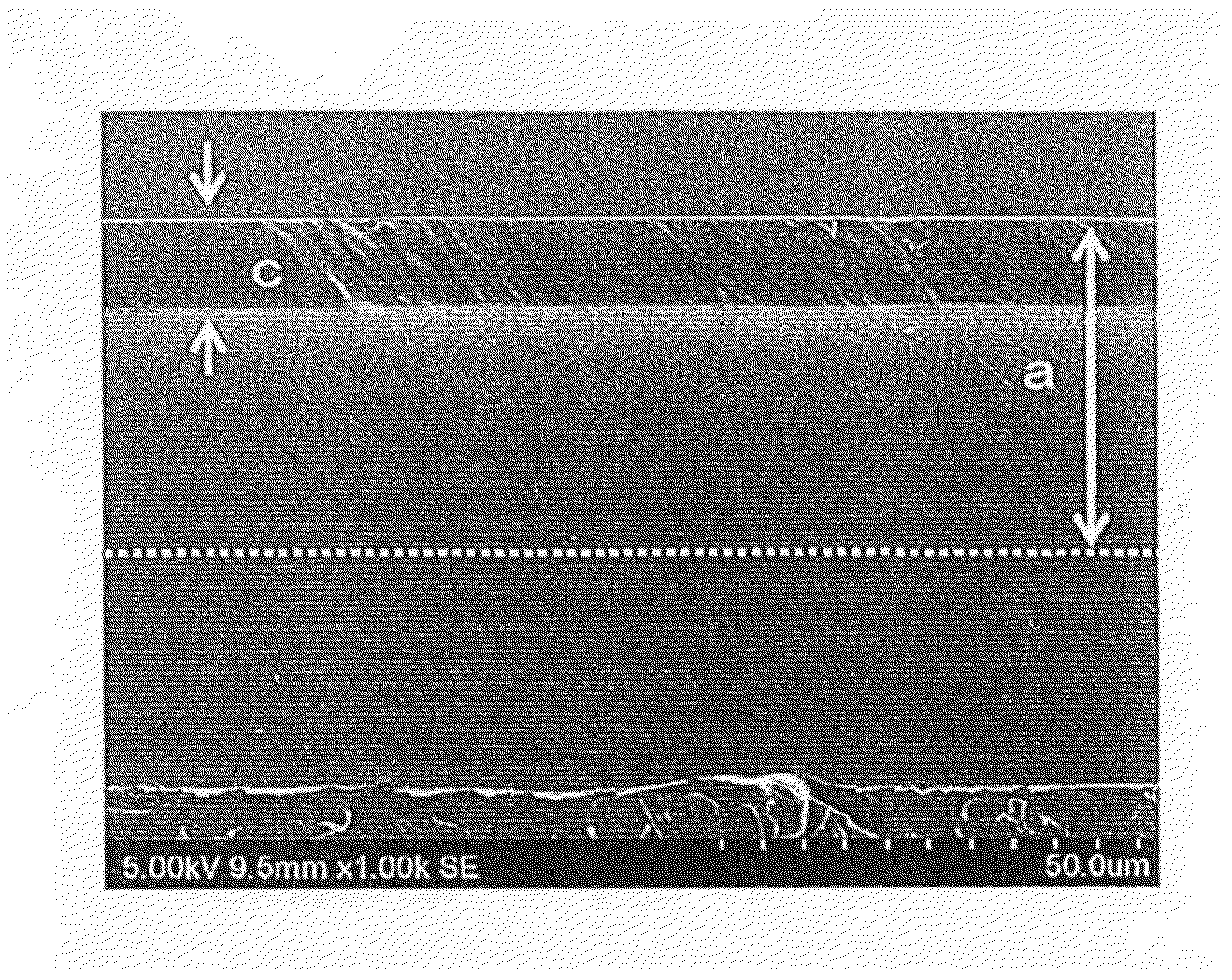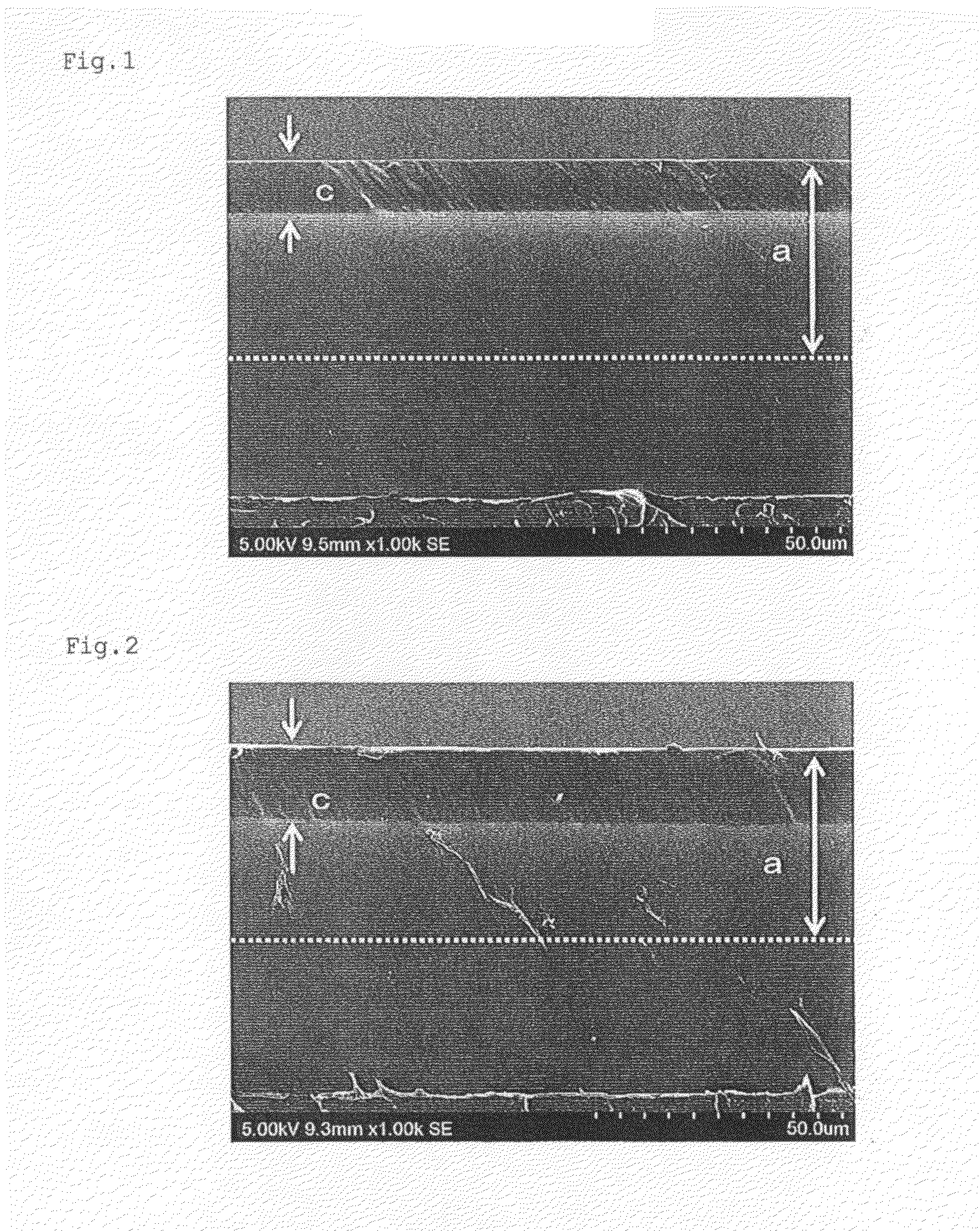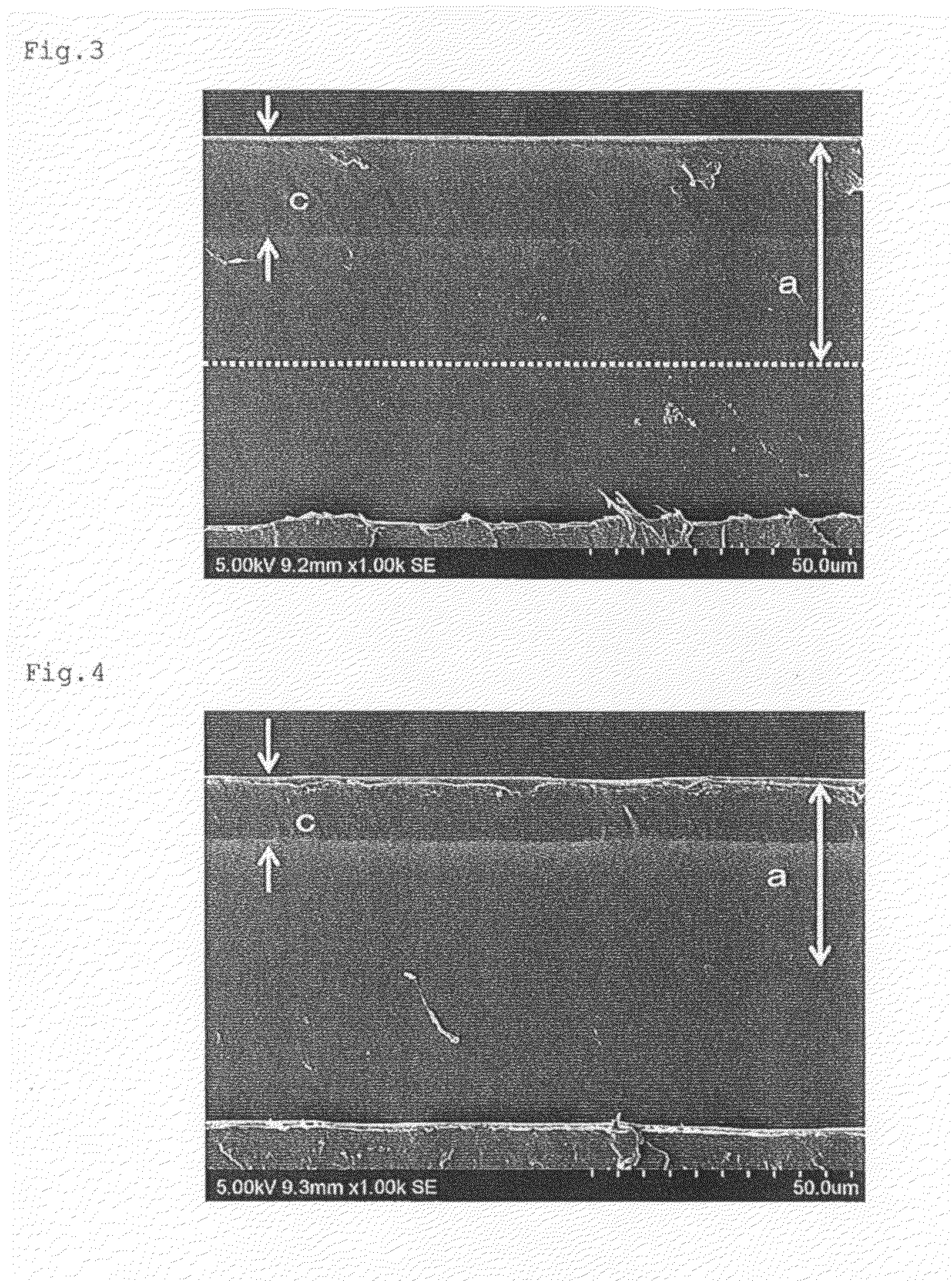Viscoelastic articles with polymer layer containing elastomer unevenly distributed
a viscoelastic and polymer layer technology, applied in the field of viscoelastic articles, can solve the problems of insufficient transparency and staining of the adherend, neither rubber pressure-sensitive adhesives nor acrylic pressure-sensitive adhesives can provide, and achieve the effect of convenient production and satisfactory adhesion
- Summary
- Abstract
- Description
- Claims
- Application Information
AI Technical Summary
Benefits of technology
Problems solved by technology
Method used
Image
Examples
preparation example 2
of Polymerizable Composition Containing Elastomer
[0151]A monomer mixture containing 90 parts by weight of 2-ethylhexyl acrylate and 10 parts by weight of acrylic acid was combined with 22.5 parts by weight of a styrene-ethylene / butylene block copolymer (SEBS) (trade name “KRATON G1650” supplied by Kraton Polymers Japan Ltd.), followed by stirring at 60° C. for 6 hours to completely dissolve SEBS. After cooling to room temperature (25° C.), the resulting viscous monomer mixture was further combined with 0.3 part by weight of a photoinitiator (trade name “IRGACURE 651” supplied by Ciba Specialty Chemicals Corporation), 11 parts by weight of a hydrogenated petroleum resin (trade name “ARKON P115” supplied by Arakawa Chemical Industries, Ltd.) as a tackifier resin, and 0.1 part by weight of 1,6-hexanediol diacrylate as a crosslinking agent, followed by stirring to give, as a homogeneous mixture, a polymerizable composition containing an elastomer (hereinafter also referred to as a “poly...
preparation example 3
of Polymerizable Composition Containing Elastomer
[0152]A monomer mixture containing 90 parts by weight of 2-ethylhexyl acrylate and 10 parts by weight of acrylic acid was combined with 22.5 parts by weight of a styrene-ethylene / butylene block copolymer (SEBS) (trade name “KRATON G1650” supplied by Kraton Polymers Japan Ltd.), followed by stirring at 60° C. for 6 hours to completely dissolve SEBS. After cooling to room temperature (25° C.), the resulting viscous monomer mixture was further combined with 0.3 part by weight of a photoinitiator (trade name “IRGACURE 651” supplied by Ciba Specialty Chemicals Corporation), 22.5 parts by weight of a hydrogenated petroleum resin (trade name “ARKON P115” supplied by Arakawa Chemical Industries, Ltd.) as a tackifier resin, and 0.1 part by weight of 1,6-hexanediol diacrylate as a crosslinking agent, followed by stirring to give, as a homogeneous mixture, a polymerizable composition containing an elastomer (hereinafter also referred to as a “po...
preparation example 4
of Polymerizable Composition Containing Elastomer
[0153]A monomer mixture containing 90 parts by weight of 2-ethylhexyl acrylate and 10 parts by weight of acrylic acid was combined with 22.5 parts by weight of a styrene-butadiene block copolymer (SBS) (trade name “KRATON D1101” supplied by Kraton Polymers Japan Ltd.), followed by stirring at 60° C. for 6 hours to completely dissolve SBS. After cooling to room temperature (25° C.), the resulting viscous monomer mixture was further combined with 0.3 part by weight of a photoinitiator (trade name “IRGACURE 651” supplied by Ciba Specialty Chemicals Corporation), 11 parts by weight of a hydrogenated petroleum resin (trade name “ARKON P115” supplied by Arakawa Chemical Industries, Ltd.) as a tackifier resin, and 0.1 part by weight of 1,6-hexanediol diacrylate as a crosslinking agent, followed by stirring to give, as a homogeneous mixture, a polymerizable composition containing an elastomer (hereinafter also referred to as a “polymerizable ...
PUM
| Property | Measurement | Unit |
|---|---|---|
| Fraction | aaaaa | aaaaa |
| Thickness | aaaaa | aaaaa |
| Transparency | aaaaa | aaaaa |
Abstract
Description
Claims
Application Information
 Login to View More
Login to View More - R&D
- Intellectual Property
- Life Sciences
- Materials
- Tech Scout
- Unparalleled Data Quality
- Higher Quality Content
- 60% Fewer Hallucinations
Browse by: Latest US Patents, China's latest patents, Technical Efficacy Thesaurus, Application Domain, Technology Topic, Popular Technical Reports.
© 2025 PatSnap. All rights reserved.Legal|Privacy policy|Modern Slavery Act Transparency Statement|Sitemap|About US| Contact US: help@patsnap.com



